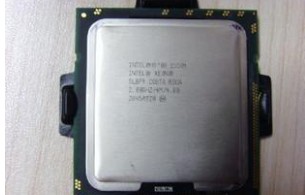This article is mainly about the introduction of t9900 and q9100, and focuses on the performance parameters of t9900 and q9100.
t9900On the afternoon of June 2, 2009, Intel shockedly released T9900. T9900 is the top processor of the T series, with a main frequency of 3.06G and a secondary cache of 6M. It is the highest frequency processor among the Core mobile processors. Even in 2011, three years later, the performance of the T9900 is still strong. After many media tests, the current mid-range I5 low-voltage processor is still difficult to beat the T9900 in other aspects except for the new hyper-threading technology. Intel’s wholesale price for 1,000 units is 530 US dollars.

performance
Many players also find that T9900's processor overclocking capability is very powerful, and it is easy to exceed 3.5 on a laptop.
From the point of view of the parameters, the T9900 is exactly the same as the X9100 except for the TDP of 35W. You may have questions. Because T9900 wants to control TDP at 35W, it sacrifices a little bit of performance. After media testing, T9900 is about 2% lower than X9100, but due to power consumption issues, T9900 has wider availability.
Since it is the top processor of the T series for mobile platforms, the overclocking performance of T9900 is naturally also very powerful. Many players can easily overclock to 3.5.
Basic parameters
appropriate types
Notebook CPU
CPU series
CORE 2 DUO
manufacturer
Intel
CPU core
Number of transistors
410 million
Craftsmanship
45 nm
Thermal Design Power (TDP)
35W
Core area
107 square millimeters
Core type
Penryn
Number of cores
dual core
CPU frequency
Main frequency
3066MHz
Bus frequency
1066MHz
CPU socket
Slot type
Socket 478
Number of pins
478pin
CPU cache
128KB
Secondary cache
6MB
CPU technology
MMX, SSE (1.2.3S.4.1), EM64T, VT-x, etc.
Virtualization technology
Intel VT
Other parameters
Other properties
Support virus protection technology
Supports enhanced Intel Speedstep technology
Support Intel 64-bit technology
Compare
After reading the parameters of T9900, it is natural to think of the E8400 on the desktop. The main frequency of the E8400 is 3.0, the FSB is 333M, and the front-side bus is 1333M. What will be the result of the comparison between the two? ?
First of all, the notebook processor and the desktop processor are not completely equal. Even if the parameters of the two are completely equal, the notebook processor has to control power consumption, and the number of pins is not as much as that of the desktop, and the performance is not comparable to the desktop of the same grade. The CPU is very normal (even if it is the same notebook series X9100, the parameters are exactly the same as the T9900, and the performance is better than T9900, because X9100 does not control power consumption compared with T9900), so it is meaningless to compare the two, unless It is a super powerful notebook processor that can easily challenge the desktop, such as the extreme processor QX9300 of the Core 2 mobile platform, and you can easily challenge the Q6 series and Q8 series quad-core processors on the desktop. Win. Nevertheless, T9900 and E8400 are comparable in some aspects, such as higher main frequency, super π calculation, T9900 can run within 15S, E8400 basically can only linger at 15S or beyond.
The super π ran into the 15S, which is rare for the processors on the desktop. The current i5 is in the lead, but there are many i5s that can't run into the 15S, right?
In any case, T9900 is the top product of the T series after all (I dare to pack a ticket and there will be no T series that is more powerful than T9900, just look at the numbers, unless there is a so-called T9999 freak...) T9900 performance , Can not be questioned. Of course, the powerful processor has never gotten rid of the hat of high heat. T9900 and T6600 are both T series and the same 35W TDP. However, the heat of T9900 is larger than that of T6600. Players must remember: The higher the frequency of the processors of the same series, the greater the heat generation. Even if the TDP is the same, it cannot get rid of this law...
q9100Important parameters
Production process: 45 nanometers
Secondary cache: 6MB*2
Core code: Yorkfield
Applicable type: desktop
Multiplier: 7 times
FSB: 333MHz
Intel Core 2 quad-core Q9100 (discrete) detailed parameters switch to the traditional table version
Basic parameters
Applicable type: desktop
CPU series: Core 2 quad-core Q9000
CPU frequency
CPU frequency: 2.33GHz
FSB: 333MHz
Multiplier: 7 times
Bus frequency: 1333MHz
CPU socket
Slot type: LGA 775
Number of pins: 775pin
CPU core
Core code: Yorkfield
Number of cores: four cores
Production process: 45 nanometers
CPU cache
Secondary cache: 6MB*2
Technical Parameters
Instruction set: MMX, SSE, SSE2, SSE3, SSSE, SSE4.1, SE64T
Which is better, t9900 or q9100a:
T9900 dual-core 3.06G 6M L2 cache 35w
Q9100 Quad-core 2.26G 12M L2 cache 45W
The front side bus is 1066
Multi-threaded Q9100 is better
But T9900 is generally used because the main frequency and high performance are better than Q9100, and it has less heat.
And because the Q9100 is quad-core, not all machines can light up
ConclusionThis is the end of the related introduction about t9900 and q9100. Please correct me if there are any deficiencies.
Related reading recommendations: What is the difference between a chip and a CPU?
Related reading recommendations: cpu internal structure micrograph/cpu internal structure enlarged view
PVC keychain maker,pvc keychain manufacturers,pvc figural keychain,pvc keychain handmade,pvc keychain online
Shenzhen Konchang Electronic Technology Co.,Ltd , https://www.konchangs.com
